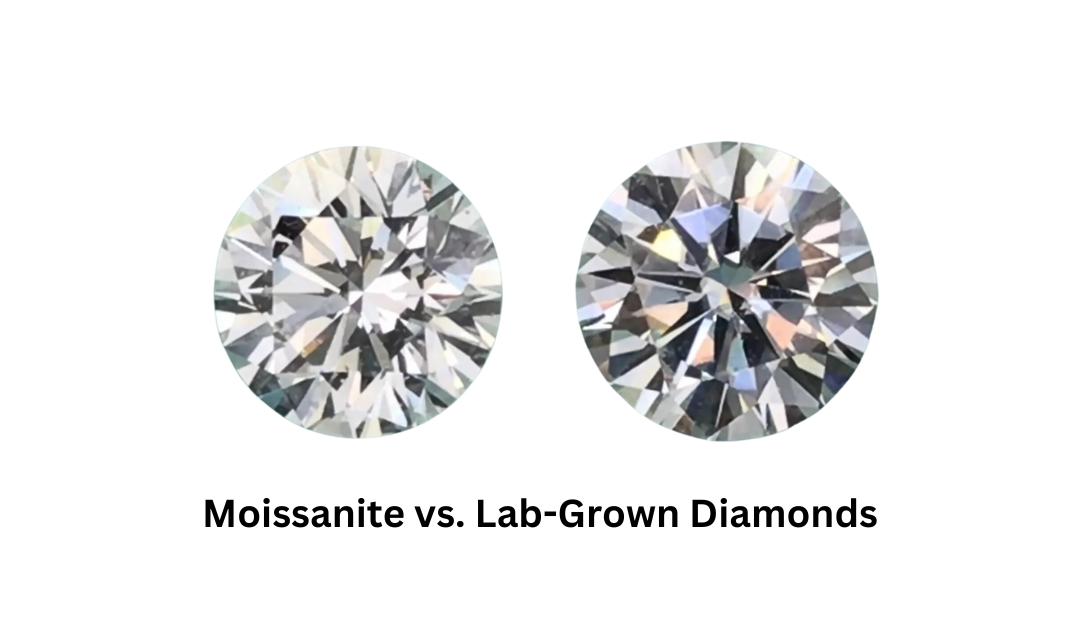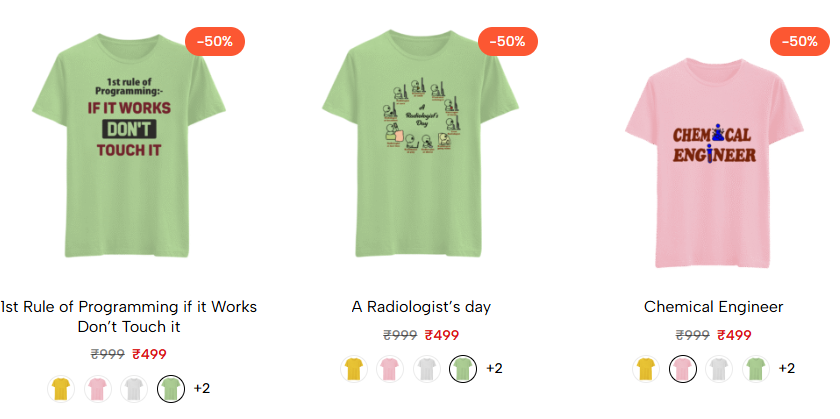In the world of fine jewelry, the choice between moissanite and lab-grown diamonds has become increasingly prevalent, offering consumers alternative options to traditional mined diamonds. Both moissanite and lab-grown diamonds possess their own unique characteristics and benefits, making the decision between the two a matter of personal preference and priorities. In this article, we’ll explore the differences between moissanite and lab-grown diamonds, including their composition, appearance, durability, and ethical considerations.
Difference between lab grown diamonds and moissanite
1. Composition and Origin:
Moissanite is a naturally occurring mineral composed of silicon carbide, first discovered in meteorites and later synthesized in laboratories for use in jewelry. On the other hand, lab-grown diamonds are created in controlled laboratory environments using advanced technological processes that mimic the natural conditions in which diamonds form beneath the Earth’s surface. While moissanite is a distinct mineral, lab-grown diamonds share the same chemical composition and crystal structure as mined diamonds, consisting of pure carbon atoms arranged in a cubic crystal lattice.
2. Appearance and Optical Properties:
One of the primary differences between moissanite and lab-grown diamonds lies in their appearance and optical properties. Moissanite exhibits exceptional brilliance, fire, and scintillation, often displaying more colorful flashes of light compared to diamonds due to its higher refractive index. Lab-grown diamonds, on the other hand, closely resemble mined diamonds in appearance, possessing the same brilliance, sparkle, and clarity. While both moissanite and lab-grown diamonds offer stunning beauty, each gemstone has its own distinct optical characteristics that appeal to different preferences.
3. Durability and Hardness:
In terms of durability and hardness, moissanite and lab-grown diamonds both offer excellent resistance to scratching, chipping, and abrasion, making them suitable for everyday wear. Moissanite ranks 9.25 on the Mohs scale of mineral hardness, making it one of the hardest known substances, second only to diamonds, which rank 10 on the Mohs scale. Lab-grown diamonds possess the same hardness as mined diamonds, ensuring their durability and longevity. Whether you choose moissanite or lab-grown diamonds, you can expect both gemstones to withstand the rigors of daily life with minimal wear and tear.
4. Ethical and Environmental Considerations:
When it comes to ethical and environmental considerations, moissanite and lab-grown diamonds offer distinct advantages over traditional mined diamonds. Moissanite is a sustainable and ethical choice, as it is created in laboratories using eco-friendly processes and does not involve the environmental and social impacts associated with diamond mining. Lab-grown diamonds, similarly, are guaranteed to be conflict-free and ethically sourced, providing consumers with peace of mind knowing that their jewelry is produced responsibly and without harm to communities or the environment. By choosing moissanite or lab-grown diamonds, consumers can support sustainable practices and make conscious decisions that align with their values.
5. Pricing and Affordability:
Discuss the pricing differences between moissanite and lab-grown diamonds, highlighting the affordability of moissanite compared to the typically lower cost of lab-grown diamonds compared to mined diamonds. Provide examples or price ranges to illustrate the cost savings that consumers can expect when choosing moissanite or lab-grown diamonds.
6. Availability and Selection:
Explore the availability and variety of moissanite and lab-grown diamond options in the market, including different cuts, sizes, colors, and shapes. Discuss the range of design options available for engagement rings, earrings, necklaces, and other jewelry pieces, showcasing the versatility and customization opportunities offered by both gemstones.
7. Maintenance and Care:
Offer tips and recommendations for maintaining and caring for moissanite and lab-grown diamond jewelry, including cleaning methods, storage practices, and precautions to prevent damage or scratches. Emphasize the durability and resilience of both gemstones, reassuring readers that their jewelry will remain beautiful and pristine with proper care and maintenance.
8. Consumer Reviews and Testimonials:
Include testimonials or reviews from consumers who have purchased moissanite or lab-grown diamond jewelry, sharing their experiences, satisfaction, and feedback. Highlight any positive comments about the appearance, durability, affordability, and ethical considerations of moissanite and lab-grown diamonds, providing real-life examples of why these gemstones are gaining popularity among jewelry enthusiasts.
9. Industry Trends and Future Outlook:
Discuss the current trends and developments in the moissanite and lab-grown diamond industries, including advancements in technology, changes in consumer preferences, and projections for future growth. Offer insights into how these trends may influence the market demand for moissanite and lab-grown diamond jewelry, as well as potential innovations or improvements on the horizon.
10. Customization Options:
Explore the extent to which moissanite and lab-grown diamond jewelry can be customized to suit individual preferences and styles. Discuss the availability of customization options such as engraving, setting styles, metal choices, and personalized designs, highlighting the flexibility and creativity that consumers can enjoy when selecting their perfect piece of jewelry.
11. Cultural and Historical Significance:
Explore the cultural and historical significance of moissanite and lab-grown diamonds, including any symbolic meanings or associations attributed to these gemstones in different cultures and societies. Discuss how perceptions of beauty, value, and symbolism may influence consumers’ preferences and choices when selecting moissanite or lab-grown diamond jewelry for special occasions such as engagements, weddings, or anniversaries.
12. Consumer Education and Awareness:
Highlight the importance of consumer education and awareness when it comes to understanding the differences between moissanite and lab-grown diamonds. Provide resources and recommendations for further research, such as reputable websites, industry organizations, and educational materials, to empower readers to make informed decisions and navigate the complexities of the fine jewelry market with confidence.
13. Personal Stories and Experiences:
Share anecdotes or personal stories from individuals who have chosen moissanite or lab-grown diamond jewelry for their special occasions, such as engagements or weddings. Include testimonials, interviews, or case studies that illustrate the emotional significance, practical considerations, and overall satisfaction of choosing moissanite or lab-grown diamonds for their jewelry needs.
Conclusion:
The choice between moissanite and lab-grown diamonds ultimately comes down to personal preference, priorities, and values. While moissanite offers exceptional brilliance and affordability, lab-grown diamonds provide the timeless beauty and ethical integrity of mined diamonds without the environmental and social impacts. Whether you’re drawn to the colorful sparkle of moissanite or the classic elegance of lab-grown diamonds, both gemstones offer a stunning and sustainable alternative to traditional mined diamonds, allowing consumers to make choices that reflect their individual style and values in the world of fine jewelry.


